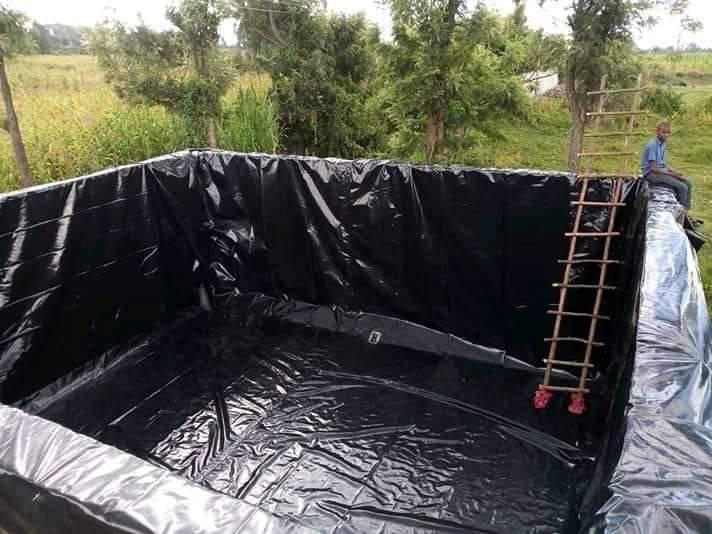
Wet salting is a simple technology of preserving skins using salt.( PIC: Kenya Livestock Marketing Council)
Farmers in Northern Kenya can improve the quality of their hides and skins by using a new wet salting technology developed by officers at the Kenya Agricultural Research and Livestock Organization (KALRO).
The quality of hides and skins produced in the pastoral areas is of low quality, mainly attributed to poor curing methods among others in the production value chain. The sun drying method used by pastoralists to cure hides and skins i.e. ground and suspension methods have been responsible for low quality production.
Dr. Anastasia Kagunyu (Anthropologist, KALRO Sericulture), Mr. Francis Matiri (Rural Development Economist, KALRO-Embu) and Mr. Elias Ngari (Hides and Skins Development Officer, Marsabit) saw the need to introduce wet salting technique to assist the producers, middlemen and traders in improvement of the quality of hides and skins.
Wet salting is a simple technology of preserving skins using salt to avoid spoilage before they are taken to the tanneries. The best salt for wet salting is industrial salt which is course. The amount of the salt to be applied is 30% of the weight of the hide and skin. Industrial salt reduces the water in hides and skins; it also has an additional protective effect as it penetrates the tissues and inhibits the growth of deteriorating organisms.
In wet salting, the skins are placed flesh side up in a sheltered area immediately after slaughter where salt (approximately 30% of the weight of the skin), is spread on the flesh side. The next skin is then placed on top and again salted on the flesh side, in, this way both sides of the skin are in contact with salt.
READ ALSO: Salt supplements prevent diseases in cows after parturition
READ ALSO: Nakuru farmer increases milk production by letting cows watch TV
READ ALSO: Vet saves arid area cows with low cost feed preservation
About 50 skins can be safely stacked in one pile without causing damage to those lower in the pile. One has to ensure that salt is uniformly spread and applied on each area of the skin/hide. It takes 21 days for curing to be complete, but for hotter climates such as northern Kenya, it may take lesser time.
Without preservation, the hides or skins would spoil before they are received in the tannery. Spoiled hides and skins make bad leathers which may have to be discarded. Seventy percent of hides and skins exported and utilized for leather tanning in Kenya are produced in the arid and semi-arid areas of Kenya by small holder farmers.
There is declining market demand for sun dried hides and skins as they produce leather products of poor quality. Due to good quality leather production from wet salted hide and skins, the international and local market demand for wet salted curing method. The prices of wet salted hides and skins are better than for sun dried ones as their prices are more than double.
At the market level, wet salted hides and skins are preferred as they take a short time to cure and have fewer chemicals. The other advantage of wet salting is that it does not produce bad odor as compared to the sun dried hides and skins.
Write comment (0 Comments)
















